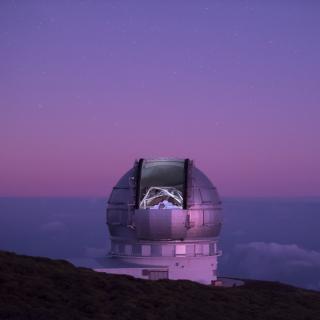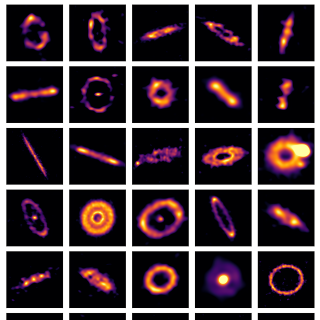It may interest you
-
 The Solar System research group at the Instituto de Astrofísica de Canarias (IAC) is participating in the international programme to keep a closet track of asteroid 2024 YR4. The aim is to determine its orbit with the highest possible precision before it stops being observable by ground based and satellite telescopes in April, and so improving our value of the probability that it will impact the Earth in 2032. In this context several telescopes of the Canary Observatories of the IAC are playing an outstanding role in this observing campaign: The Gran Telescopio Canarias (GTC) at the Roque deAdvertised on
The Solar System research group at the Instituto de Astrofísica de Canarias (IAC) is participating in the international programme to keep a closet track of asteroid 2024 YR4. The aim is to determine its orbit with the highest possible precision before it stops being observable by ground based and satellite telescopes in April, and so improving our value of the probability that it will impact the Earth in 2032. In this context several telescopes of the Canary Observatories of the IAC are playing an outstanding role in this observing campaign: The Gran Telescopio Canarias (GTC) at the Roque deAdvertised on -
 The Instituto de Astrofísica de Canarias (IAC) and the University of La Laguna (ULL) have collaborated in the research that reveals the structure of 74 exocomet belts, it means, belts with minor bodies outside our solar system, around stars close to us. Astrophysicists led by a team from Trinity College Dublin , with the Universidad de La Laguna (ULL) and Instituto de Aastrofísica de Canarias (IAC) collaboration- have for the first time imaged a large number of exocomet belts around nearby stars, and the tiny pebbles within them. The crystal-clear images show light being emitted from theseAdvertised on
The Instituto de Astrofísica de Canarias (IAC) and the University of La Laguna (ULL) have collaborated in the research that reveals the structure of 74 exocomet belts, it means, belts with minor bodies outside our solar system, around stars close to us. Astrophysicists led by a team from Trinity College Dublin , with the Universidad de La Laguna (ULL) and Instituto de Aastrofísica de Canarias (IAC) collaboration- have for the first time imaged a large number of exocomet belts around nearby stars, and the tiny pebbles within them. The crystal-clear images show light being emitted from theseAdvertised on -
 An international research, in which the Instituto de Astrofísica de Canarias (IAC) has played a leading role, has found a planet of intermediate size between Earth and Venus orbiting a cool red dwarf 40 light-years away. The new world, named Gliese 12 b, lies within the habitable zone of its star, making it a promising candidate for the James Webb Space Telescope to study its atmosphere. The discovery was made possible thanks to observations from NASA's TESS satellite and other facilities such as CARMENES, at Calar Alto Observatory (CAHA), and MuSCAT2, installed at the Carlos SánchezAdvertised on
An international research, in which the Instituto de Astrofísica de Canarias (IAC) has played a leading role, has found a planet of intermediate size between Earth and Venus orbiting a cool red dwarf 40 light-years away. The new world, named Gliese 12 b, lies within the habitable zone of its star, making it a promising candidate for the James Webb Space Telescope to study its atmosphere. The discovery was made possible thanks to observations from NASA's TESS satellite and other facilities such as CARMENES, at Calar Alto Observatory (CAHA), and MuSCAT2, installed at the Carlos SánchezAdvertised on